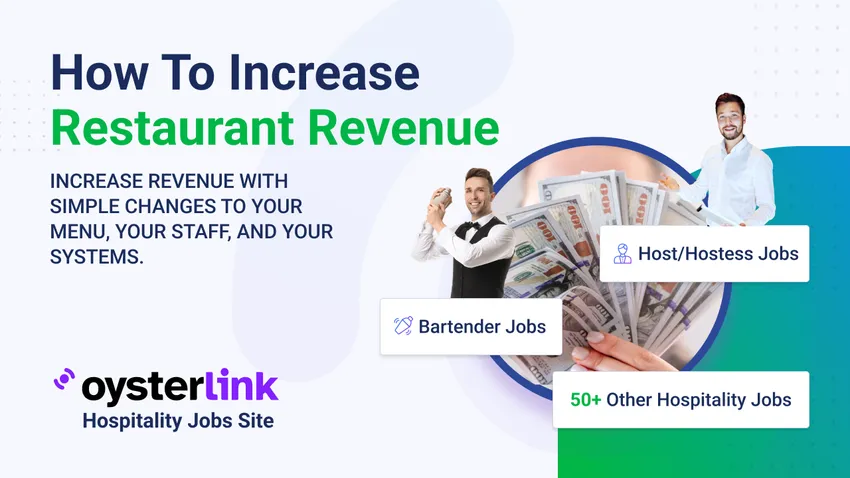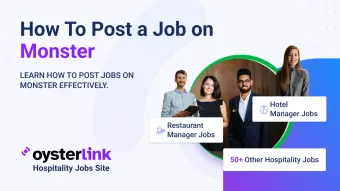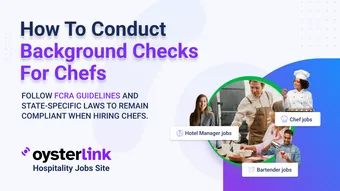Restaurant revenue has never been more within reach.
With a 1,325% increase in “restaurants near me” searches over the last decade, the opportunity to boost sales is massive.
This guide walks you through proven strategies to increase your restaurant's bottom line.
Understanding Your Restaurant's Revenue Potential
Sales analysis forms the foundation of a successful restaurant business.
By examining your current performance and setting achievable targets, you can create a roadmap for increasing your restaurant revenue.
Analyzing your current sales patterns
Your Point of Sale (POS) system holds valuable insights into your restaurant's performance. Start by tracking key metrics such as daily customer count and average spending per visit.
Restaurant sales analytics show that establishments using data-driven strategies experience up to 10% increase in overall sales.
Setting realistic revenue goals
- Begin by calculating your restaurant's break-even point - the amount needed to cover all expenses.
- Then, examine your RevPASH (Revenue per Available Seat Hour) to understand how effectively each seat generates income.
Consider these key factors when setting your goals:
- Average check value: Monitor how much customers typically spend during different meal periods.
- Table turnover rate: Track how many times tables are occupied during service.
- Labor cost percentage: Maintain this between 20%-35% of sales for optimal profitability.
Historical data provides the most reliable foundation for forecasting future sales. When analyzing past performance, pay special attention to:
- Seasonal fluctuations in customer traffic
- Impact of special events on revenue
- Changes in customer purchasing habits
- Effects of menu updates on sales
For new restaurants without historical data, research similar establishments in your area to establish realistic benchmarks.
Observe their customer flow during peak hours and estimate weekly covers to set achievable targets. Adjust your projections based on:
- Day-to-day variations (weekdays vs. weekends)
- Seasonal changes in business
- Local events affecting foot traffic
- Market conditions and competition
Menu Planning and Revenue Generating Ideas for Restaurants
Menu optimization stands as a direct path to improving your restaurant's financial returns.
Through strategic planning and data-driven decisions, you can create a menu that maximizes both sales and profits.
Menu pricing strategies that work
Setting optimal menu prices requires a careful balance between costs and customer perception.
Start by calculating your food cost percentage, which should ideally stay between 28% and 35%.
To determine the right price for each dish, divide your plate cost by the targeted food cost percentage.
For instance, if your food cost is $2.20 and targeted percentage is 32%, your menu price should be at least $6.88.
Consider implementing these proven pricing approaches:
- Calculate production costs and add a predetermined profit margin
- Set prices based on quality, ambiance and unique features
- Create appealing package deals that combine multiple items
Seasonal menu updates
Seasonal menus offer significant advantages for your restaurant's bottom line. Research shows that restaurants updating their menus seasonally experience a 26% increase in orders.
Also, 90% of customers value sustainability in their dining choices. To effectively implement seasonal changes, plan your menu updates at least one month in advance.
Food cost control techniques
Controlling food costs is key to protecting profit margins, especially as 9 in 10 operators face higher costs than pre-pandemic levels.
Build a data-driven culture by tracking inventory daily and reviewing CoGS regularly. Use recipe costing to price dishes accurately and spot low-margin items.
Train staff on portion control and waste reduction, and use smart restaurant management systems to automate processes.
Training Your Staff to Boost Restaurant Revenue
A well-trained team enhances guest experience, boosts sales and ensures smooth operations throughout service hours.
Teaching Servers effective upselling methods
Successful upselling begins with product knowledge. Servers must understand every menu item and unique selling points.
Implement these upselling strategies:
- Train staff to suggest slightly more expensive alternatives without being pushy
- Encourage personal recommendations based on firsthand experience with menu items
- Focus on one upsell item per shift until mastery
- Time suggestions appropriately throughout the meal service
Improving table turnover rates
Faster table turns mean more revenue. Have servers ask guests upfront if they’re on a tight schedule so service can match their pace.
Train staff to combine table visits, saving 5–10 minutes per party. Keep popular add-ons prepped to speed things up.
During busy times, teach staff how to politely move lingerers to the bar.
Creating New Revenue Generating Ideas for Restaurants
Expanding your revenue streams offers a strategic approach to boost your restaurant's income.
By diversifying beyond traditional dining services, you can tap into new markets and increase profits throughout the year.
Starting a catering service
To launch a successful catering operation, focus on the following:
- Corporate gatherings and business meetings
- Private celebrations like weddings and birthdays
- Educational events and wellness seminars
- Seasonal and holiday functions
Hosting special events
Private events generate approximately 30% of revenue for venues that offer this service. Consider organizing these proven event types:
- Wine tastings and themed dinners
- Corporate networking functions
- Holiday celebrations
- Educational lectures aligned with your cuisine
Adding takeout options
Statistics show that 76% of restaurant owners report increased business growth through digital ordering systems. To optimize your takeout service:
- Partner with reliable delivery platforms
- Design menu items that maintain quality during transit
- Implement efficient packaging solutions
- Create exclusive takeout promotions
Using Technology to Maximize Restaurant Revenue
Modern restaurant technology opens new paths to increase sales and streamline operations.
Point of Sale (POS) systems now handle much more than simple transactions, becoming central hubs for business growth.
Online ordering systems
Digital ordering platforms boost average check sizes by 25-30%. These systems integrate directly with your restaurant's website, eliminating commission fees from third-party platforms.
Square Online reports that restaurants implementing their ordering system have seen sales increase by more than $40,000.
Restaurant management software
Modern POS systems do far more than ring up sales. They manage inventory, schedule staff, and track customer info in one place.
They also sync data across multiple locations, making it easier to run everything from one dashboard. The system shows what sells best, helps forecast inventory, and prevents stockouts or overordering.
Digital payment solutions
Contactless payments are now essential. They accept cards, digital wallets, QR codes, and mobile pay, speeding up checkout and table turnover.
Electronic payments often boost tips, make splitting bills easier, and send instant receipts.
When payment systems connect with kitchen displays, orders move faster and stay accurate. Real-time alerts help staff stay coordinated, and built-in loyalty tools track guest preferences.
Conclusion: Turning Strategy into Restaurant Revenue Growth
Restaurant success comes from smart, targeted strategies. Use data-driven menus, strong staff training, and multiple revenue streams as your foundation.
Add strategic pricing and seasonal updates to boost profits without hurting guest satisfaction.
Let technology do the heavy lifting—digital ordering, management tools, and contactless payments keep operations running smoothly.
Start with one or two tactics and build from there. Consistency and regular check-ins drive real, lasting revenue growth.













Loading comments...